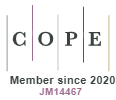Analysis of the impact of the COVID-19 Pandemic on the mobility patterns and accessibility to public transportation in informal settlements in the municipality of São Paulo
DOI:
https://doi.org/10.5585/2024.25170Keywords:
urban mobility, slum, informal settlements, COVID-19, complex networksAbstract
Objective: This study examines the impact of the COVID-19 pandemic on the urban mobility in informal settlements in the municipality of São Paulo, investigating accessibility and changes in mobility patterns during the pandemic.
Methods: Using complex network techniques, we analyze the proximity of bus lines and metro stations to favelas, based on temporal bus passenger data to compare mobility patterns before and during the pandemic.
Relevance: Understanding the effects of the pandemic on mobility patterns in marginalized communities is crucial for inclusive urban planning, supporting policies to improve transportation services and reduce disparities.
Results: We observe difficulties in accessing bus lines for residents of peripheral areas and changes in mobility patterns reflecting alterations in travel. Theoretical.
Contributions: The combination of complex network techniques and temporal data analysis allows for investigating accessibility, measuring the impact of the COVID-19 pandemic on public transportation, analyzing relationships between public transportation lines and favelas, and providing insights into mobility in informal settlements.
Management Contributions: The results have practical implications for urban management, highlighting the need to improve accessibility to public transportation in peripheral areas and demanding adaptive strategies and policies that prioritize the needs of marginalized communities in times of crisis.
Conclusion: This study reveals challenges to accessibility and changes in mobility patterns caused by the COVID-19 pandemic in informal settlements, providing input for decisions that promote sustainable and inclusive urban development.
Downloads
References
Berge, C. (1984). Hypergraphs: combinatorics of finite sets (Vol. 45). Elsevier. Available in: https://shop.elsevier.com/books/hypergraphs/berge/978-0-444-87489-4
Boccaletti, S., Latora, V., Moreno, Y., Chavez, M., & Hwang, D.-U. (2006). Complex networks: Structure and dynamics. Physics Reports, 424(4), 175–308. https://doi.org/https://doi.org/10.1016/j.physrep.2005.10.009
Brandão, B. H. B., & de Mello Bueno, L. M. (2018). Intervenções de mobilidade e acessibilidade em programas de urbanização de favelas: análise em São Paulo e Rio de Janeiro de 1996 a 2012. Arquiteturarevista, 14(2), 231–242. https://doi.org/10.4013/arq.2018.142.11
Delgado, F. C. M., Jesus, G. M. K., Alves, M. W. B. F., & Bezerra, B. S. (2022). Public Transport Perspectives for 2030 In Brazil: A Path Towards Sustainable Mobility. Revista de Gestão Social e Ambiental, 16(1), e02840–e02840. https://doi.org/10.24857/rgsa.v16.2840
Ding, R., Ujang, N., Hamid, H. Bin, Manan, M. S. A., Li, R., Albadareen, S. S. M., Nochian, A., & Wu, J. (2019). Application of complex networks theory in urban traffic network researches. Networks and Spatial Economics, 19, 1281–1317. https://doi.org/10.1007/s11067-019-09466-5
Dong, H., Ma, S., Jia, N., & Tian, J. (2021). Understanding public transport satisfaction in post COVID-19 pandemic. Transport Policy, 101, 81–88. https://doi.org/10.1016/j.tranpol.2020.12.004
Fernandes, L. A. de C., Silva, C. A. F. da, Dameda, C., & Bicalho, P. P. G. de. (2020). Covid-19 and the Brazilian Reality: The Role of Favelas in Combating the Pandemic. Frontiers in Sociology, 5. https://doi.org/10.3389/fsoc.2020.611990
Gonçalves, M. V., & Malfitano, A. P. S. (2022). Jovens brasileiros em situação de pobreza: O cotidiano na favela. Journal of Occupational Science, 29(2), 263–278. https://doi.org/10.1080/14427591.2020.1854040
Hearnshaw, E. J. S., & Wilson, M. M. J. (2013). A complex network approach to supply chain network theory. International Journal of Operations & Production Management, 33(4), 442–469. https://doi.org/10.1108/01443571311307343
Lacasa, L., & Toral, R. (2010). Description of stochastic and chaotic series using visibility graphs. Phys. Rev. E, 82(3), 36120. https://doi.org/10.1103/PhysRevE.82.036120
Lee, G., Yoo, J., & Shin, K. (2022). Mining of real-world hypergraphs: Patterns, tools, and generators. Proceedings of the 31st ACM International Conference on Information & Knowledge Management, 5144–5147. https://doi.org/10.1145/3511808.3557505
López, D., & Lozano, A. (2020). Shortest hyperpaths in a multimodal hypergraph with real-time information on some transit lines. Transportation Research Part A: Policy and Practice, 137, 541–559. https://doi.org/10.1016/j.tra.2019.09.020
Metrô de São Paulo (2019). Relatório-Síntese OD 2017. Disponível em: https://transparencia.metrosp.com.br/dataset/pesquisa-origem-e-destino/resource/b3d93105-f91e-43c6-b4c0-8d9c617a27fc
Rocha, F. (2021). Gestão dos corpos nas favelas e periferias no Rio de Janeiro: Das remoções à Covid-19. Margens, 15(24), 47–60. http://dx.doi.org/10.18542/rmi.v15i24.10087
Strogatz, S. H. (2001). Exploring complex networks. Nature, 410(6825), 268–276. https://doi.org/10.1038/35065725
Wolf, M. M., Klinvex, A. M., & Dunlavy, D. M. (2016). Advantages to modeling relational data using hypergraphs versus graphs. 2016 IEEE High Performance Extreme Computing Conference (HPEC), 1–7. https://doi.org/10.1109/HPEC.2016.7761624
Yerra, B. M., & Levinson, D. M. (2005). The emergence of hierarchy in transportation networks. The Annals of Regional Science, 39, 541–553. https://doi.org/10.1007/s00168-005-0230-4
Zou, Y., Donner, R. V, Marwan, N., Donges, J. F., & Kurths, J. (2019). Complex network approaches to nonlinear time series analysis. Physics Reports, 787, 1–97. https://doi.org/10.1016/j.physrep.2018.10.005
Downloads
Published
How to Cite
Issue
Section
License
Copyright (c) 2024 Autores

This work is licensed under a Creative Commons Attribution-NonCommercial-ShareAlike 4.0 International License.
- Abstract 198
- pdf 62
- pdf (Português (Brasil)) 113









